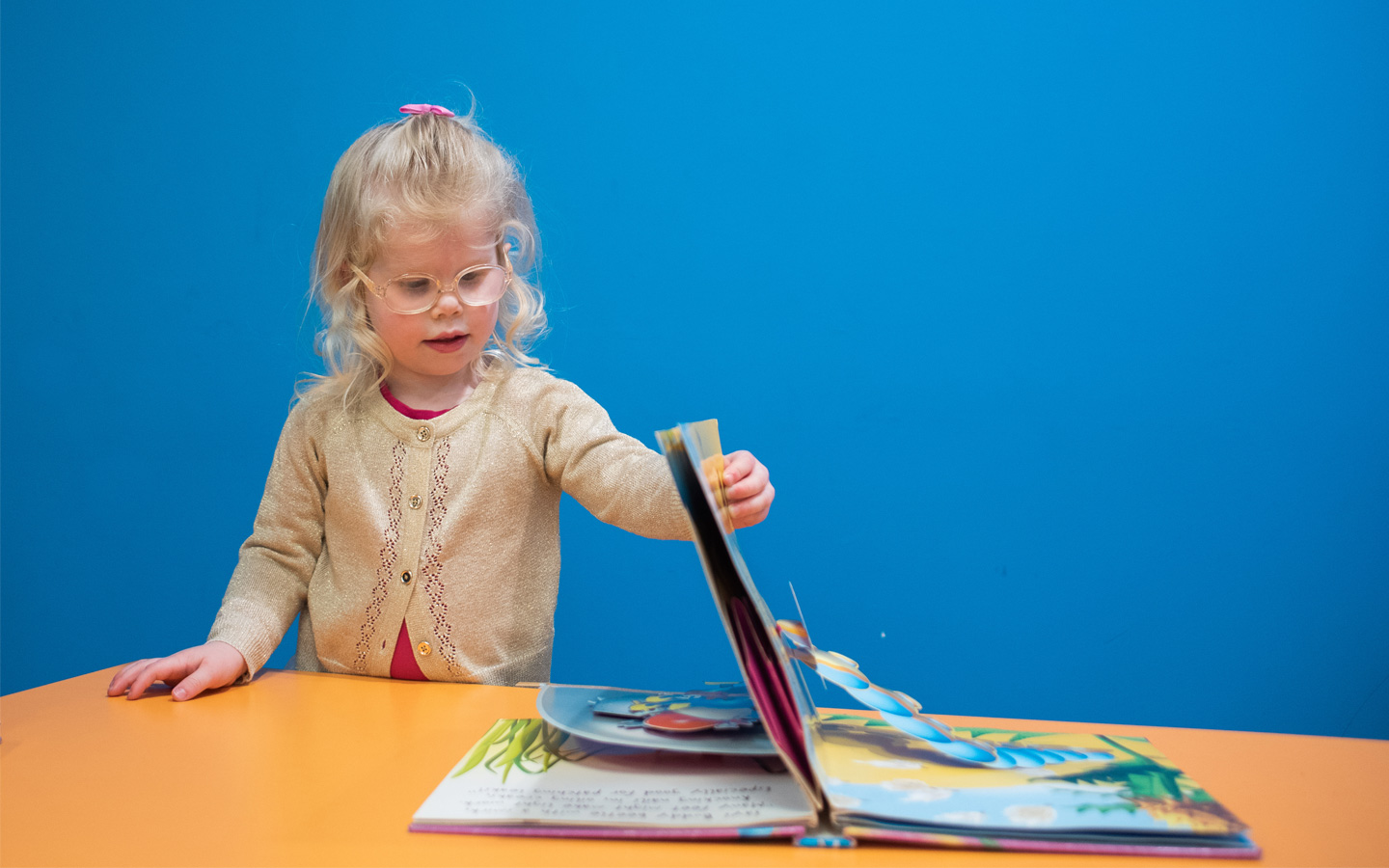Helpful Information
Improving speech, language and literacy through shared reading
access_time5min read

Do you have a child or family member who needs some extra support when it comes to reading? You’re not alone. Reading can be tricky to pick up at the best of times, so we had a chat to Novita Speech Pathologist, Jana Karakasilis, who says that shared reading is a great way to improve speech, language and literacy – all fundamentals of reading – right from your own home.
So, what exactly is shared reading?
Shared reading is an interactive reading experience that occurs when kids join in or share a book or other text while they’re being supported by a parent, family member, friend or carer.
Teachers often use this as a classroom strategy with kids, modelling the skills of confident readers including reading with fluency and expression, and the great news is that this can also be done at home!
Shared reading is an instructional strategy that can be used to teach lots of different reading skills including comprehension, fluency, decoding and vocabulary. This exercise is appropriate for all ages and reading abilities.
What sort of materials can be used?
There are plenty of different types of materials that can be used for shared reading as long as the print can be understood and read easily. You might like to use story books with pictures, poems or more advanced books if the reader is more confident.

Introduce the story
- Discuss the book cover’s title and illustration.
- Invite predictions about the story.
- Point out and explain the author and illustrator.
Read the story
- Be dramatic, showing obvious delight in both the storyline and the language.
- Point out and discuss elements of the images/illustrations in the story (colour, shape, size, texture, location, emotions, etc).
- If appropriate and convenient, pause and invite predictions.
- Ask brief questions to measure comprehension and spur curiosity.
Conclude the reading period
- Allow time and space for spontaneous reactions and comments.
- Ask about:
- Parts the kids enjoyed most or least.
- The story line (why certain events took place).
- Ask questions relating to the story and the children, for example have they experienced something similar? Would they have handled certain situations differently than the characters?
Conduct additional after-reading activities
- Ask the kids to retell the story in their own words.
- If appropriate, focus on repetitive elements, such as a phrase, chant or chorus and ask children to re-word that element in the story.
- Point to the words in the text to demonstrate the conventions of print.
Re-read the story
- If time permits re-read the book.
- Talk about story characteristics and print conventions (i.e. location of print versus image, where to start reading, features like punctuation and capitalisation).
- Usually, the first reading emphasises meaning and enjoyment and subsequent readings aim to:
- Increase participation.
- Teach about book characteristics and print conventions.
- Teach reading strategies.
- Help develop a sight vocabulary of high frequency words and teah phonics (letter/sound correspondence).
- Due to the limited time, you may want to cover one of these areas during the first reading of the book.
Allow independent reading
- If time permits, allow kids to browse or read the book themselves.
- Holding a book and reading it themselves often gives children a feeling of being able to read like an adult and so on.
Conduct follow-up activities
- Craft-making, play-acting and letter writing are some useful activities for reinforcing the “learning aspect of reading”.
If you would like to learn more about how Novita’s speech pathology support services could improve your or a loved one’s language and literacy capabilities, you can contact one of our friendly staff on 1300 668 482 or [email protected]


